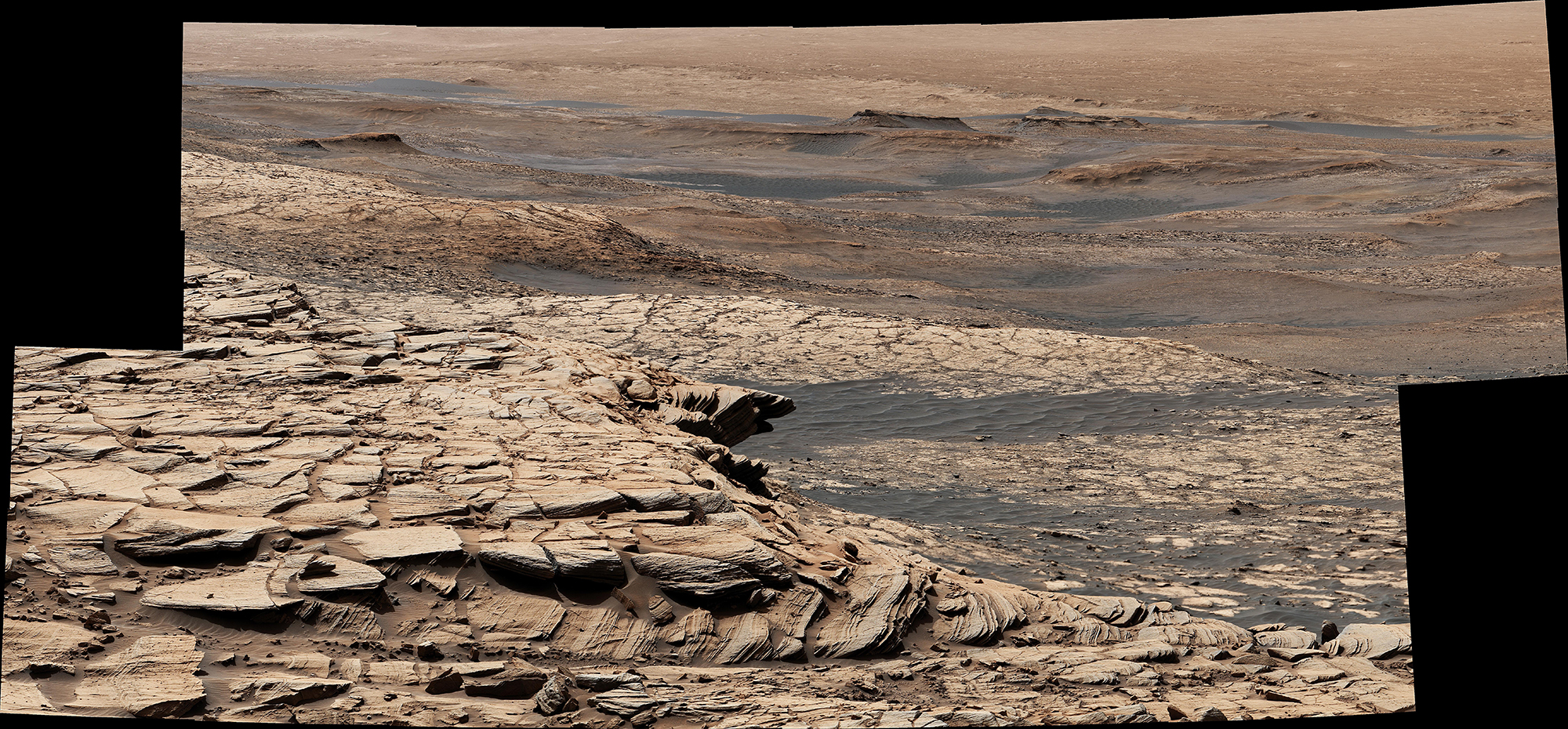NASA's Curiosity rover starts Red Planet road trip up Martian mountain
Curiosity is climbing Mount Sharp to search for evidence of past life on Mars.
Like many Americans this summer, NASA's Curiosity rover is embarking on a road trip — but on Mars.
The nearly eight-year-old mission will be guided through a traverse roughly 1 mile (1.6 kilometers) long that will see it climb farther up a mountain to learn more about the planet's history — and whether it could have been habitable for microbial life in its ancient past.
Curiosity is on its way to an area on the 3.4-mile-high (5.5 km) Mount Sharp (Aeolis Mons) nicknamed the "sulfate-bearing unit." Sulfates are usually formed around water as it evaporates, and these leftovers could provide more information about how the surface of Mars changed roughly three billion years ago, when the planet lost most of its atmosphere and running water was no longer possible on the surface.
Related: NASA needs your help teaching Curiosity how to drive on Mars
Like any journey, there will be obstacles to encounter. Curiosity needs to pick its way safely across rocky terrain while limiting further damage to its wheels. Rover drivers working from home — a pandemic containment measure keeping them from their usual offices at NASA's Jet Propulsion Laboratory (JPL) in California — will send commands to keep Curiosity on track. The rover also has some capability to drive on its own, using artificial intelligence.
"Curiosity can't drive entirely without humans in the loop," Matt Gildner, lead rover driver at JPL, said in a statement. "But it does have the ability to make simple decisions along the way to avoid large rocks or risky terrain. It stops if it doesn't have enough information to complete a drive on its own."
Curiosity's last stop from 2019 to this year was the "clay-bearing unit", another environment that was formed in water. Scientists are also interested in a feature between the clay unit and the sulfate unit, nicknamed the "Greenheugh pediment."
Breaking space news, the latest updates on rocket launches, skywatching events and more!
It is thought that this pediment shows how the climate changed in Gale Crater, Curiosity's landing zone. There used to be lakes within the 96-mile (154-kilometer) wide crater, but billions of years ago the water disappeared. The remaining sediments eroded over eons into Mount Sharp.
The pediment, however, formed a little later — scientists aren't even sure if it was made using water or wind erosion. Sand also built up on the pediment's surface over time, creating a sandstone cap. Rover examinations of Greenheugh back in March showed nodules in the sandstone.
"Nodules like these require water in order to form," Alexander Bryk, a doctoral student at the University of California, Berkeley who led the pediment detour, in the statement. "We found some in the windblown sandstone on top of the pediment, and some just below the pediment. At some point after the pediment formed, water seems to have returned, altering the rock as it flowed through it."
These nodules are a little different in composition than the "blueberry" features, made from spherical hematite inclusions, that the Opportunity rover first discovered in 2004. Both the blueberries and nodules, however, show the presence of water in the ancient past in the rovers' respective regions.
If all goes to plan, Curiosity will reach the sulfate unit later this year, during Earth's Northern Hemisphere fall. Like any road trip, however, rover drivers may stop their machine along the way if they spot something interesting.
Curiosity will celebrate its eighth anniversary of landing on Aug. 6. NASA plans to send a new rover this summer to search for habitable samples in Jezero Crater and cache the most promising ones for a later sample-return mission. The new rover is called Perseverance and must launch between July 30 and Aug. 15 from Florida to reach the Red Planet before Mars and Earth drift too far apart in their respective orbits.
Follow Elizabeth Howell on Twitter @howellspace. Follow us on Twitter @Spacedotcom and on Facebook.

Elizabeth Howell (she/her), Ph.D., was a staff writer in the spaceflight channel between 2022 and 2024 specializing in Canadian space news. She was contributing writer for Space.com for 10 years from 2012 to 2024. Elizabeth's reporting includes multiple exclusives with the White House, leading world coverage about a lost-and-found space tomato on the International Space Station, witnessing five human spaceflight launches on two continents, flying parabolic, working inside a spacesuit, and participating in a simulated Mars mission. Her latest book, "Why Am I Taller?" (ECW Press, 2022) is co-written with astronaut Dave Williams.



